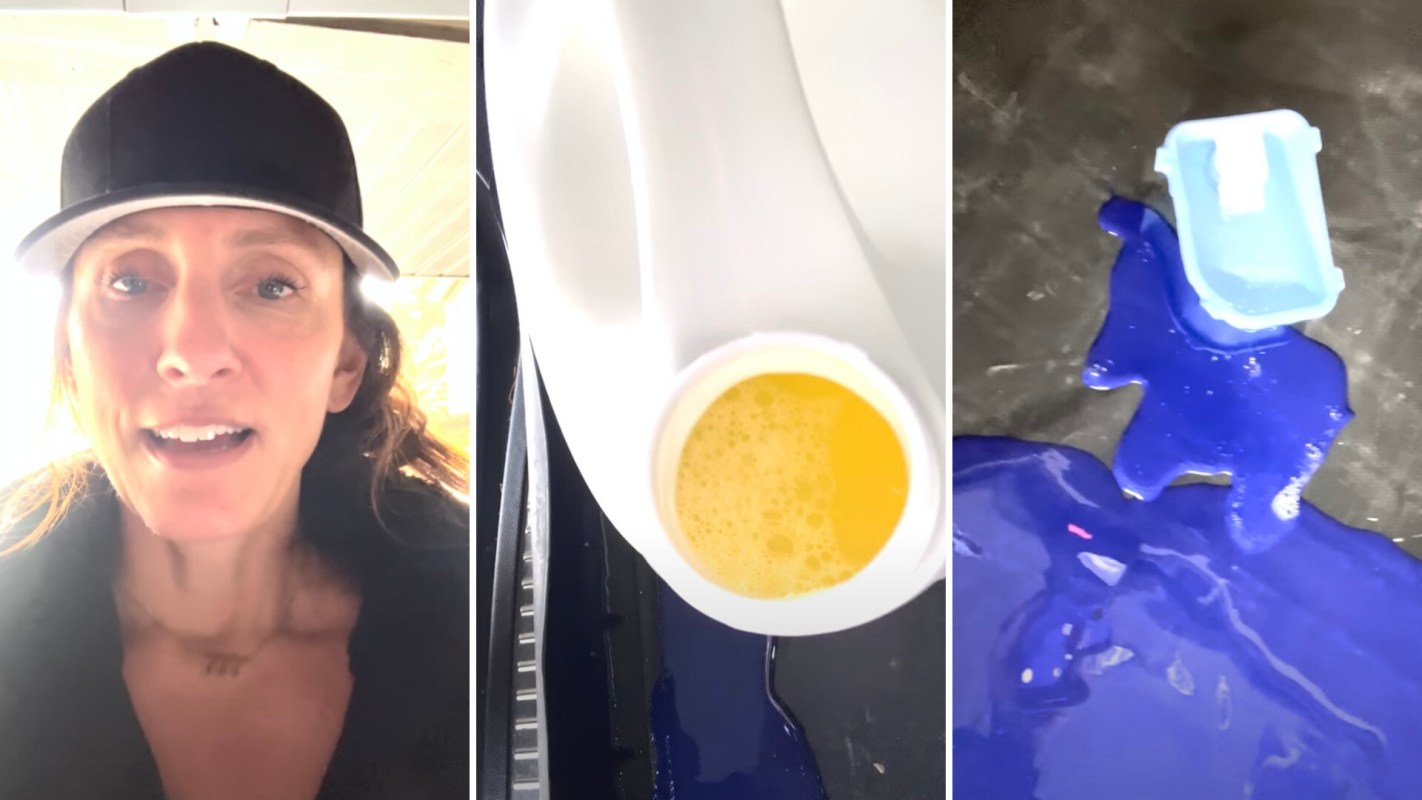It all started when I spilled laundry detergent all over my trunk.
On a return trip from Costco with what I thought was the cleanest laundry detergent I could find that would service a busy, dirty, and sweaty family of five, I opened my trunk to find the bottle had leaked all over the back of my car.
But here's the thing: It had turned from clear to "radioactive" purple just by leaving the container.
It occurred to me at that moment that the dramatic change in color was a result of a chemical reaction.
I looked up the ingredients on the Environmental Working Group database (known as EWG) and discovered that the "Free Clear," "No. 1 brand recommended by dermatologists" laundry detergent was rated an F, and had ingredients prompting a warning of a risk for cancer, reproductive problems, developmental effects, allergies, and immunotoxicity.
Somehow a highly toxic everyday product had crept into my home, and I'd had enough.
With a career in healthcare and over a decade of research and awareness about the toxins in our everyday products and environment, I thought I was well-educated on clean living, buying organic, and looking for "clean" labels.
But after my laundry-detergent lightbulb moment, I became a student of clean living, and I decided to dedicate my career to helping people navigate and choose cleaner products. I had witnessed so many otherwise-healthy individuals entering the hospital for care, and I wanted to keep my family and myself safe.
With little regulation on harmful ingredients in personal and household products, rampant greenwashing on labels and mediocre screening by "natural and healthy" brick-and-mortar and online marketplaces, I concluded there had to be a better way. I launched my own clean living company, Free Living Co.
Not only do toxic ingredients in consumer products wreak havoc on our health, they also pose a significant risk to the environment. Their production, transport, use, and disposal are all big offenders when it comes to keeping our ozone layer, air quality, soil quality, and tap water healthy and clean.
In densely populated areas, the waste from industrial and consumer products poses an equal threat to our ozone layer as fossil fuels.
But don't let it get you down! There are simple things you can do today to reduce the toxins in your immediate world and become part of the collective voice telling large chemical and consumer companies that we want them to do better.
Here are my top "Free Living" tips to get you started toward a cleaner and greener lifestyle:
☑️ Vote with what you buy
Companies are mostly concerned with their bottom line, and when consumers start to shift behavior, they will be forced to shift as well. There are many environmentally friendly, non-toxic substitutes that produce similar or better efficacy and user experiences as the toxic ones. Let's encourage the big consumer brands to innovate better!
🫧 Last pump, last squirt
It may not be financially feasible or environmentally friendly to toss all the toxins at once, so employ the "last pump, last squirt" rule. As you pump those last drops of lotion, or spray that last squirt of all-purpose cleaner, ask yourself if you could replace it with a cleaner alternative. Then refer to tip No. 1!
❌ Avoid the "FPP" — fragrance, pesticides, and plastics
All of these are chemicals that have been linked to some of our biggest modern-day health concerns like cancer, endocrine disruption causing infertility, immunotoxicity causing autoimmune disorders, and on and on.
(See this study on perfumes, this one on pesticides, and this on plastics.) Avoid them like the plague.
Opt for naturally-scented or unscented products.
Buy local, in-season, and organic produce, especially when you're buying these 12 fruits and vegetables that are most often treated with pesticides.
Substitute plastics for reusable alternatives like stainless steel, glass, medical-grade silicone, or natural fibers like bamboo, hemp, linen, or organic cotton.
Before you know it, skipping the FPP will become second nature.
💚 Lastly, give yourself grace
The journey to clean living is a process, and the consumer products industry does not make it easy. One small change is a great first step, and over time, those small changes add up.
Dana Grinnell is the founder of Free Living Co., which helps humans live healthier lives free of harmful products.
Join our free newsletter for easy tips to save more, waste less, and help yourself while helping the planet.









